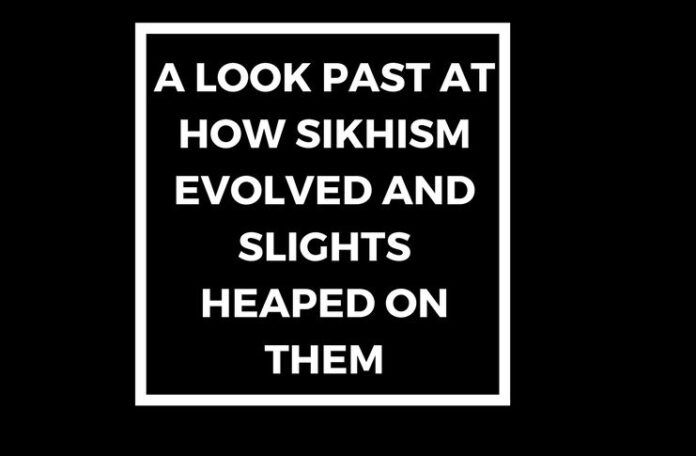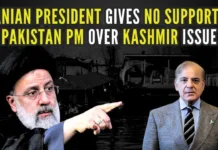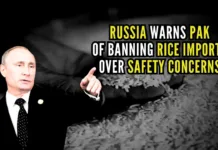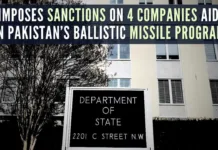
Evolution of Sikhism
Part 1 of this series can be ‘accessed ‘ here. This is Part 2.
Pakistan’s nefarious designs to foment trouble in India through the two ‘K’ words – ‘Khalistan’ and Kashmir have turned out duds.
A chronology of events indicates that the Khalistan theme is now a pipedream.
[dropcap color=”#008040″ boxed=”yes” boxed_radius=”8px” class=”” id=””]T[/dropcap]he last Sikh Preceptor – ‘Guru Gobind Singh’ – had rendered Sikhism as the/shield arms of Hinduism. Each Sikh defending the borders of Akhand [undivided] Bharat shall prove to be equivalent to 1,25,000 enemy soldiers. The map of undivided India drawn by the Guru depicted a kingdom stretching from Afghanistan in the northwest to Burma in the southeast.
The life example and leadership of Guru Gobind Singh has been of historic importance to the Sikhs.
In 1699, vide the first Anandpur Sahib Resolution, Gobind Singh’s inspiring leadership shaped the Punjab’s pleasant peasant sparrows into fearless hawks. He ordained that Bharat that is India shall be ruled by the principles of Khalsa – the 5-fold path of Sikhism. [The operative line was Raj Karega Khalsa.]
Excerpts from the relevant Wikipedia dossier:
In 1699, the Guru requested the Sikhs to congregate at ‘Anandpur ‘ on ‘Vaisakhi’ (the annual spring harvest festival)
According to folklore, Guru Gobind Singh took 5 into a tent, emerged with a bloodied sword 4 times, but, finally emerged with all the 5 men. They came to be called Panj Pyare [five dear men to the Guru].
[dropcap color=”#008040″ boxed=”yes” boxed_radius=”8px” class=”” id=””]G[/dropcap]uru Gobind Singh then mixed water and sugar into an iron bowl, stirring it with a double-edged sword to prepare what he called Amrit (nectar). He then got the Panj Pyare to imbibe it. The five men got a new suffix to their names – Singh or lion. The Guru too changed his name from Gobind Rai to Gobind Singh.
The life example and leadership of Guru Gobind Singh has been of historic importance to the Sikhs. He institutionalized the Khalsa (literally, Pure Ones), which played the key role in protecting the Sikhs long after his death, such as during the nine invasions of Punjab and holy war led by Ahmad Shah Abdali from Afghanistan between 1747 and 1769
Smarting under the defeats at the hands of India in 1047, 65 and 71 wars, Pak dictator Zia-ul-Haq had decided to use the Sikhs – Indian army’s mainstay as a weapon against the same Indian state.
[dropcap color=”#008040″ boxed=”yes” boxed_radius=”8px” class=”” id=””]I[/dropcap]n the first week of June 1984, ‘Operation Bluestar ‘ – witnessed two former brother-soldiers – ‘General Kuldip Singh Brar’ from the Indian army and his former colleague ‘Major General Shabeg Singh’ on the side of Bhindranwale within the Golden Temple – fighting each other. Brar and Singh had stood side by side when some 92,000 Pakistani soldiers including ‘Amir Abdullah Khan Niazi’ had surrendered to India’s eastern command head – ‘General Jagjit Singh Arora ‘ in Dhaka in December 1971.
‘Prime Minister Indira Gandhi ‘ was killed in cold blood by her 2 Sikh bodyguards – Beant Singh and Satwant Singh 4 months after Operation Bluestar. The resultant pogrom triggered by rowdy Congress leaders left thousands of Sikhs painfully dead in Delhi.
This sickened the psyche of a huge Sikh section of the Indian army. Many of their relatives had done the supreme sacrifice while defending India. The continuing injustice at the hands of the well entrenched political fixers in Delhi has caused Sikhs to feel cheated. Using this angst, international trouble makers keep reviving the bogey of Khalistan periodically.
Nevertheless, Khalistan is simply not feasible.
[dropcap color=”#008040″ boxed=”yes” boxed_radius=”8px” class=”” id=””]I[/dropcap]n the 80’s Punjab produced roughly 65% of India’s agricultural output. It was at that time that the demand attracted international attention, thanks to the antics of ‘ Dr Jagjit Singh Chohan’, former Finance Minister of Punjab, living in London, calling himself the President in Exile of the Republic of Khalistan.
Chohan talked of a Khalistan encompassing Punjab, Himachal Pradesh, parts of Haryana, Rajasthan and Gujarat. That, however, was a joke as the separatists’ support based lay only in the Punjab.
Arguably, such a state would prove financially unviable as the inimical India would not buy a single grain from Punjab even it its citizens died of hunger. Arguably, the landlocked Punjab, with its huge grain output could export its output through Karachi in the west. But to expect Pakistan to allow its major port to help the Sikhs garner wealth – that very race which continues to the bugbear of the Islamic attackers – was and is unimaginable.
In 1985, Dr Chohan was confronted on these points in Khalistan House by this writer. He had no answers.
[dropcap color=”#008040″ boxed=”yes” boxed_radius=”8px” class=”” id=””]I[/dropcap]n 1986, following Britain’s Westland chopper deal with the then PM Rajiv Gandhi, the main backer of Dr Chohan – one Ajit Singh Khera was asked to bring down the Khalistan flag that fluttered above a block of flats in London’s central Bayswater District.
From then on, one of the two ‘K’ words sponsored by Pakistan acquired a different longer form – Kaput!
To be continued…
Note:
1. Text in Blue points to additional data on the topic.
2. The views expressed here are those of the author and do not necessarily represent or reflect the views of PGurus.
- Hidden side of Asprusyata – The untold story - May 4, 2020
- P-3: Chidambaram betrays ex-PM Rajiv Gandhi posthumously? - June 7, 2017
- P-2 : Chidambaram betrays ex-PM Rajiv Gandhi posthumously? - June 4, 2017










